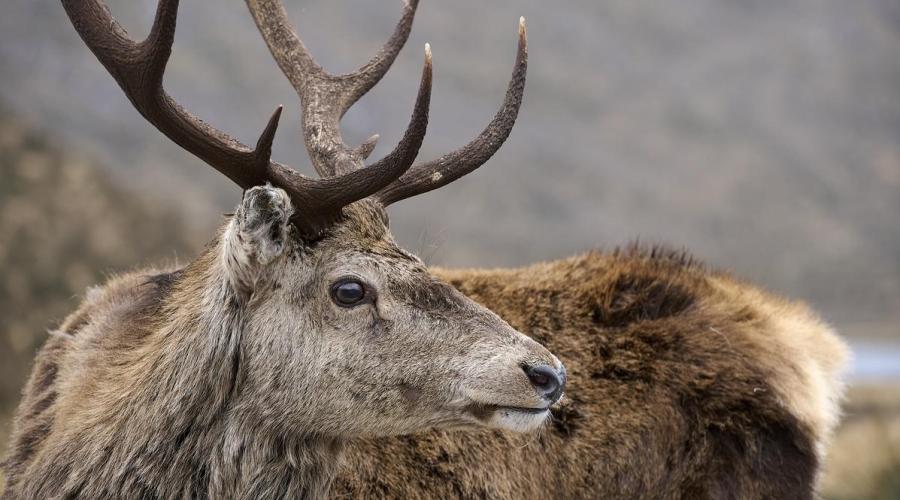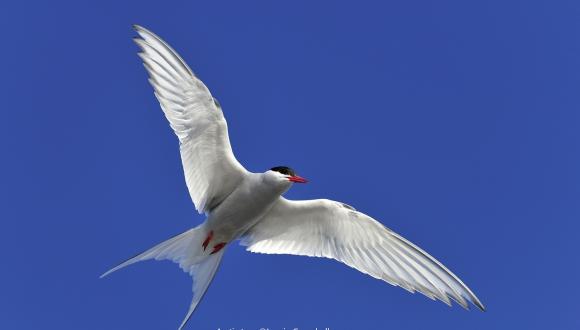
Drivers warned of deer collision risk at Navidale
1 November 2023
Drivers in north-east Scotland are being warned to take extra care at a high-risk location for collisions between deer and vehicles.
NatureScot is working with Transport Scotland and BEAR Scotland to display warning messages on electronic mobile variable message signs on the A9 at Navidale, near Helmsdale.
Although deer and vehicle collisions occur right across our road network, the 500m stretch of road immediately north of the Navidale roundabout has been identified as one of the top 10 sites in Scotland with the highest number of recorded deer/vehicle collisions.
Navidale is the only Highland location in the top 10, with the other high-risk locations all found in the Central Belt and associated with young roe deer dispersal in the spring months.
In contrast, the species of most concern at Navidale is red deer as they move from higher moorland to better pasture at lower altitudes. Red deer stags in particular may be tempted to richer feeding grounds to recover following their autumn rutting activity.
Recent analysis for NatureScot shows that ten deer and vehicle collisions have been recorded along the stretch of road in recent years.
In response to the increased potential risk at this time of year, warning signs will be in place in the area for three weeks from November 1 to November 22, to remind drivers to slow down and look out for deer.
Dominic Sargent, NatureScot Deer Policy Officer, said: “The data shows Navidale as a bit of an outlier, as the only one of the top ten high-risk locations not in the Central Belt and not near a wooded road junction. Collisions here are also more likely to involve red deer as they move to lower ground seeking food and shelter.
“As part of our ongoing work with partners to reduce deer impacts across Scotland, we’re focusing on areas where the evidence shows those impacts are highest, and Navidale is clearly a priority for public safety.
“We hope the warning message on the electronic road signs will remind drivers always to be ‘deer aware’, moderating their speed and staying alert to help reduce the likelihood of collisions.”
Angus Corby, Transport Scotland Landscape and Biodiversity Manager, said: “Transport Scotland is pleased to continue working in partnership with NatureScot in order to understand and record the impacts that wild deer have across the trunk road network.
“The agency is keen to explore avenues to reduce the potential for deer and vehicle collisions occurring anywhere on the network, to protect the welfare of native deer but primarily for the safety of road users. The use of the mobile variable message sign units is an initiative aimed at mitigating potential risk in an area where there are limited alternative options.
Tips for driving safely:
- Particularly in peak times, slow down and watch for deer crossing roads. Be aware that if you're driving near woods, deer can suddenly appear before you have time to brake.
- Try not to suddenly swerve to avoid hitting a deer. A collision into oncoming traffic could be even worse.
- Only brake sharply and stop if there is no danger of being hit by following traffic. Try to come to a stop as far away from the animals as possible to allow them to leave the roadside without panic and use your hazard warning lights.
- After dark, use full-beams when there is no oncoming traffic, as this will illuminate the eyes of deer on or near a roadway and give you more time to react. But dim your headlights when you see a deer or other animal on the road so you don’t startle it.
- Report any deer-vehicle collisions to the police, who will contact the local person who can best help with an injured deer at the roadside. Even if you’re uninjured and your car isn’t damaged, the deer may be fatally injured and suffering. Do not approach an injured deer yourself – it may be dangerous.




